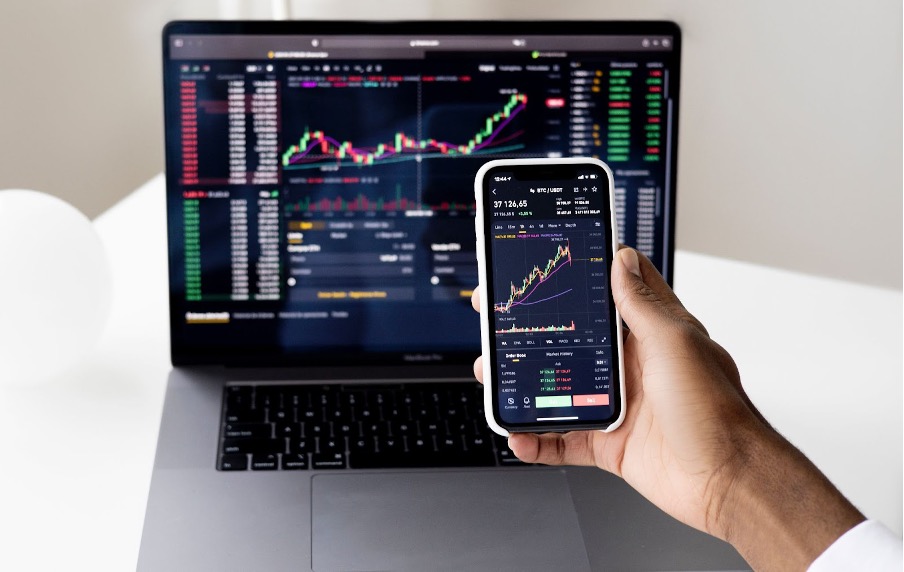COVID-19 has been a dramatic source of disruption to our way of life, but after living through two years of the pandemic, I doubt you need a reminder.
The massive health risk that the pandemic has posed to society has thrown a rather large spanner in the works economically, socially, and politically. This certainly hasn’t excluded global trade.
The ongoing effects of the worldwide pandemic have specifically affected the international trade, which has affected Australian businesses more locally. The difficulties now being faced include:
- Increased consumer demand,
- Unpredictable availability of shipping containers,
- Limited shipping space,
- Increased costs as a result of demand, and;
- Unreliable shipping information.
As has been repeated time and time again, these disruptions have been unprecedented, reminding us of the real benefits of having up-to-date risk management like never before.
The recent Ukraine crisis has also shown that the most effective means of addressing such critical disruptions is through access to trusted, timely and accurate information. Being able to make informed decisions is essential for crisis management and protecting yourself from ever changing risks.
So, what is the current global trade situation, what are key drivers, risks and direction and how can you manage the risks that relate to your
business? What additional planning and risk management measures should be considered arising from the impact of a war in Ukraine will have on supply chains, already stretched by COVID?
Allianz Global Trade Report
In December of 2021, Allianz released a Global Trade Report in response to the overwhelming observation of supply chain disruptions around the globe. Allianz, through its global specialist trade credit insurer Euler Hermes, who has specialist knowledge and insight has prepared this in-depth Global Trade report.
This report looks into the trajectory of these disruptions going into 2022, what is being done to address and manage the issues, and who is at risk of suffering the impact of these disruptions.
Despite the aforementioned unprecedented nature of recent disruptions, the report has undertaken an in-depth look into what we can expect for 2022. Understanding the current risks, how they may change as well as new or developing risks is the first step to understanding and managing the risks and minimising or avoiding major disruptions to your business.
Management Liability insurance is designed to provide protection to both the business and its directors or officers for claims of wrongful acts in the management of the business.
A business insurance pack can provide cover for your business premises and contents, against loss, damage, theft or financial loss from an insured interruption to the business.
Purchase up to six products under one Business Insurance Package.
Despite the aforementioned unprecedented nature of recent disruptions, the report has undertaken an in-depth look into what we can expect for 2022. Understanding the current risks, how they may change as well as new or developing risks is the first step to understanding and managing the risks and minimising or avoiding major disruptions to your business.
Report findings
Global disruption will remain high until the second half of 2022:
When the pandemic was first identified as a major cause of sickness and death in 2020, consumer behaviour and demand globally were at an all-time low. With lockdowns, border closers and people staying home, more concerned about their
health and where their next paycheck would come from, purchasing and engaging in global trade was not a top priority.
However, this slowly started to change towards the end of 2020 when consumer and business demand started to normalise and grow, showing exceptionally strong global trade performance. Despite this brief improvement in
trade, it posed different challenges and disruptions to the industry. In particular, increased demand resulted in the shipping container shortage, which disrupted delivery time and increased costs.
Global goods trade began to contract again in July of 2021. As a result, we’re currently seeing production shortfalls falling behind 75% of this current contraction in global trade, with major logistics bottlenecks globally.
While these
logistic bottlenecks are predicted to ‘self regulate’ over the next 12 months, it’s impossible to intervene to speed up the process.
The normalisation of trade and supply relies on three driving factors:
The balancing of global demand, supply, and shipping capacity is bound to contribute to the normalisation of global trade greatly. The latest Allianz report identifies three driving factors that will assist in restoring the balance.
1. Consumer behaviour
As mentioned, COVID-19 drastically affected consumer behaviour, causing demand to fluctuate intensely throughout the entire period of the pandemic. Currently,
consumer demand is peaking at unprecedentedly high levels, with no sign of returning to more normal levels until excess funds (personal savings or government support payments) are spent, which is estimated to be in 2023.
It is anticipated that consumers will return to normal spending and demand habits over the next 12-18 months, as explained by the fiscal stimuli in reaction to COVID-19.
Ultimately, the replacement of the cycle of durable goods indicates a more sustainable cycle, minimising supply chain bottlenecks in future.
2. Inventory levels
Inventory levels have been a major factor contributing to problems in global trade. To date, inadequate inventory has been a key contributor to bottlenecks.
However, as the report indicates, inventories have reached stable pre-crisis levels, allowing space for the output capacity to rise. If and when this occurs, it ultimately indicates that the supply chain is back in action and performing optimally.
3. Shipping congestions
The shipping container market functions like a well-oiled machine on a massive global scale of the supply chain. Well, at least it was doing so before the pandemic began to wreak havoc.
While minor disruptions can affect the shipping cycle, the pandemic has done so on an enormous scale. As a result of the unpredictable and dynamic disruptions that have continued globally over the past two years, shipping congestions and delays continue to cause major disruptions to many businesses and industries.
This poses significant issues for businesses, ultimately preventing the ability to send and receive goods in a timely manner, also then having a flow-on effect to businesses in the chain.
Fortunately, shipping container-related congestion should be less intense in 2022/2023 as capacity increases. Shipping container production is now at an all-time high to meet demand. The US is also expected to spend USD 17 billion on upgrading its port infrastructure. It is also noted that continuing delays and bottlenecks in China production facilities and ports are likely to delay normalisation globally.
The report found concerns around the balancing out of supply chains, indicating it could cause further inflation. More specifically, continuing stimulation of demand in Europe without fixing supply issues can only be inflationary.
Essentially, Europe is more at risk compared to the US when it comes to the reliance on external inputs. It is predicted that the absence of production capacity increase can delay the normalisation of bottlenecks even further than 2022 if demand remains high.
The main sectors impacted are likely to include household whitegoods and furniture, consumer electronics, automotive, and machinery and equipment as they are the most vulnerable to input shortages.
Risk Management
As the report suggests, the Northern Hemisphere is likely to have control of most of the empty shipping containers, taking control of the global trade industry as a whole. On a global scale, it expects trade to gradually return to its pre-crisis average, with growth at 5.4% in 2022 and 4.0% in 2023.
What this means for Australia and Australian businesses is that the effects of logistical issues on shipping outcomes are likely to continue posing threats and risks. There are some suggested steps below that can assist to manage these risks until the trade disruptions balance out globally.
Spread your risks
As the saying goes, don’t put all your eggs in one basket. This is especially important during these unprecedented times.
While there is a predicted light at the end of the tunnel, these shipping and logistics disruptions are ultimately unpredictable. Meaning it is essential to manage this risk by either avoiding, accepting or transferring some risks by looking at the risks vs costs of insurance.
Where possible, widen or diversify your customer base to spread the risk of delays or disruptions in particular types of goods due to shipping containers, lessening any financial impact to your business.
Update Insurance
Reviewing your insurance policy is vital, with your business changing and adapting to these challenging times, it’s more important than ever to ensure your insurance is still effective.
Specifically, transport and logistics operators should take the time to check their insurance policies and ensure any changes are made to manage any relevant risks outlined in the Allianz Global Trade Report.
As this global disruption is closely intertwined with the shipping container market, Marine & Hull Insurance for anyone who operates a
marine business and/or transport goods is certainly a cover to consider. A wide variety of marine insurance policies specialise in marine cargo, commercial hull, and marine liability.
Managing and protecting your business financially from legal liabilities resulting from global disruptions is more important than ever. Specifically, the Allianz Risk Barometer report states that business interruption is a top concern for businesses.
Business Interruption Insurance is the best way to manage these concerns, designed to protect you from losses caused by an event or accident that results in a reduction to your business income for an extended period.
The ongoing problems related to the COVID-19 pandemic have been, in many cases, unforeseen and overwhelming, reminding us of the importance of an up-to-date risk management plan.
Work with your nearest insurance adviser to assist and determine what risks can be best dealt with by insurance. Or, if you need a review of your current program to ensure it is still appropriate for your risks. At Insurance Advisernet, we pride ourselves on being informed about both industry and global trends to ensure we can provide you with advice, enabling you to make an informed decision with respect to your risks and insurance program.








